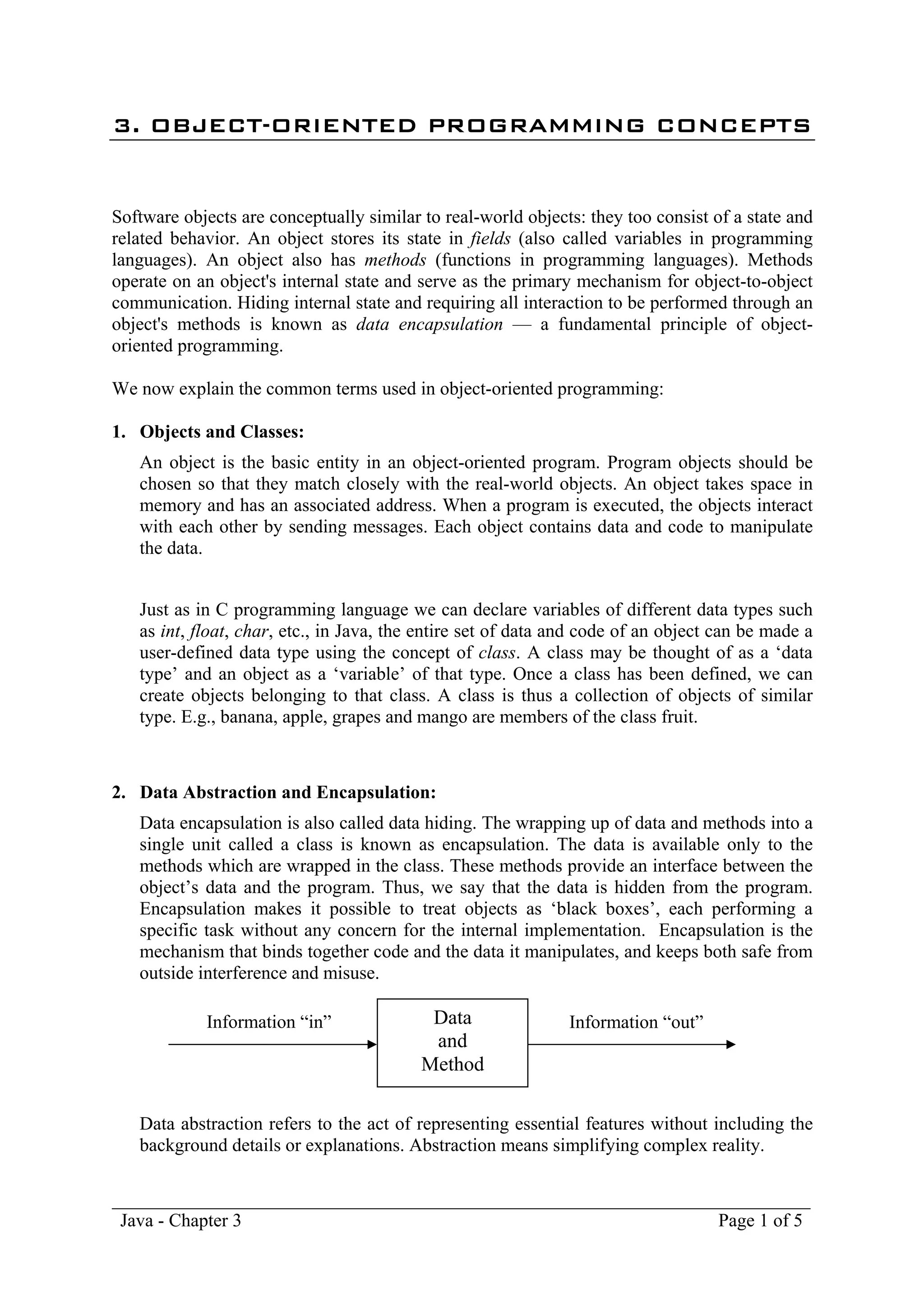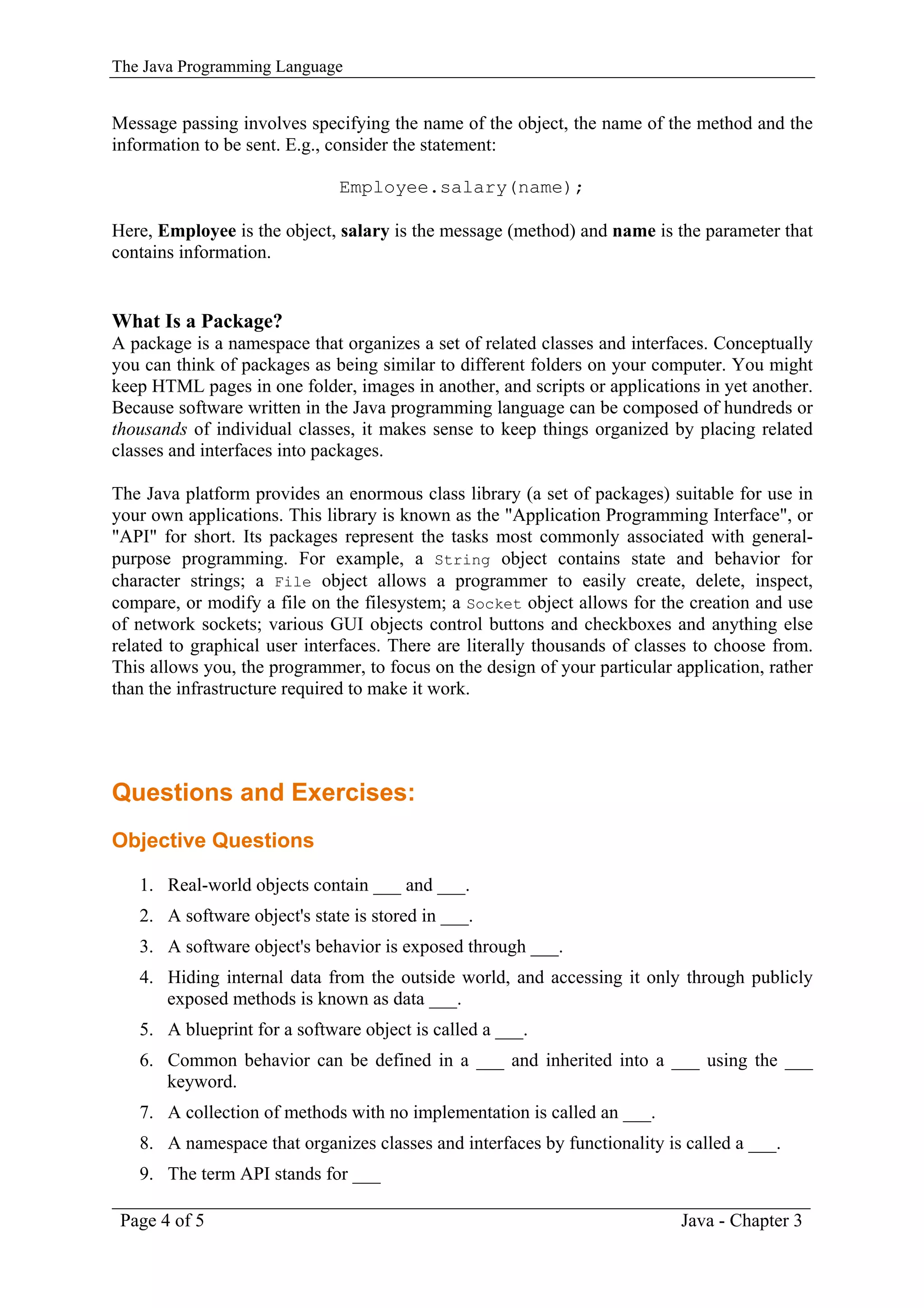Object-oriented programming concepts organize software using objects that contain data and code. An object stores its state in fields and exposes behavior through methods. Encapsulating data within objects and requiring interaction through methods is known as data encapsulation. Classes define types of objects and act as blueprints, allowing the creation of multiple objects with similar characteristics. Inheritance allows new classes to inherit properties from existing classes. Polymorphism allows objects to take on multiple forms, while dynamic binding determines appropriate code to execute based on an object's type at runtime. Objects communicate by sending and receiving messages containing method names and parameters. Packages organize related classes and interfaces into logical groups.




